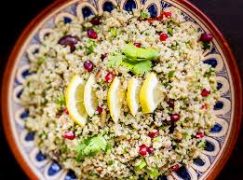To succeed in chamber music, first learn to cook
mainFrom our string quartet diarist, Anthea Kreston:

I am eating breakfast in Brussels, where I am in the middle of a three day visit to teach our master groups and hear auditions for next season. What luxury – at the Queen Elizabeth Chapel (where the Queen Elizabeth competitions are held) – Beethoven, Shostakovich, Sibelius, Schoenberg, all played by dedicated, passionate musicians in their 20’s, and all with careers in their own right, with recording contracts, multiple managers, and International competition wins under their belts. As I teach, the two-story glass wall of the concert hall shows a forest of swaying trees, and I keep a lookout for a herd of deer, who often meander through this living landscape.
Yesterday’s auditions were impressive – not only in the variety of ensemble (string trio, piano quartet, piano trio and string quartet), but in the long road these young musicians have travelled to get this far. The pre-screened submitted auditions, which arrived months ago, the years of lessons, the travel from many different countries. Every single moment of their futures depends on these 30 minutes – what happens here changes everything for their futures. If I, myself, hadn’t made it into the Quartet program at Aspen when I was their age, and sat at lunch at a particular table, I wouldn’t have met Jason, had this family and life.
In the board-room lunch after the auditions, each member of the six-person jury argued for or against each of the groups. Were they balanced, were they creative – do they have relentless drive and a vision of their futures? Do they have the time to dedicate to this – can they give up all else for this? Was there magic?
We have to be selective – only one or two can be accepted, because we already have a studio filled with groups who will stay, continuing to the next phase of their careers. We accept them at the beginning – while still students, teach them, show them how to teach themselves, and watch and help as they spread their wings and begin to fly.
My last days in Israel were fantastic, and I was finally able to eat some unbelievable foods – from street foods at the Carmel Market to late-night banquets in covered courtyards. I was wrapped in the sauces, loved the tender and crisp. I will attempt to recreate a dish here that you can cook at home. Bear in mind that I don’t measure – but give it a try!
Cauliflower, Israeli Couscous and Pomegranate Thing
Ingredients:
Pomegranate
Onions
Israeli Couscous
Veg or Chicken Stock
Cauliflower – dinner-plate amount (2-3 smaller heads or one huge one)
Optional:
Yoghurt
Get some onions going in a large pan, and start a big pot of water also. While the onions are getting good, chop your cauliflower, stem and leaves too, and plop them in the water. Get a healthy amount of stock warmed. Throw the couscous into the onions after they are crisp/translucent, and brown the couscous. Now your cauliflower is probably done – just needs a minute – and put in colander to steam dry. Throw your hot stock over the couscous and onions, and let cook. Take your cauliflower and brown a bit in another pan – I put both butter and oil in there. That was good. Now open your spice cupboard and get creative. I didn’t have things like sumac or zatar but if you do, now is your moment. I put in a big handful of sesame seeds, some curry, nutmeg, and Herbs de Provence (here called Kräuter des Provence). You might need to add some liquid in there. While this is all happening, get your pomegranate – I have a super way to get those seeds out without crushing them. “Scalp” the top, peeling the skin off to reveal the seeds. Then score along the lines of the sections – you can see where they are now. Pull apart those sections so now it is kindof like an unpeeled, irregular orange. Turn a section, seed-down, in your hand, and thwump the skin vigorously with the handle of your knife. The seeds will dislodge and fall into your hands. Mostly.
Now combine all of the hot ingredients, and serve with a handful of pomegranate seeds on top. Viola.
Optional yoghurt:
You should have started this last night, but if you do it now, you will use it tomorrow on everything. It is addictive.
Line a colander with coffee filters and dump all of your yoghurt in there. Let it drain for at least 2 hours, and up to 24. Then add whatever you want – plain, pepper, cucumber, curry, regular spices, then a little swivel of good olive oil on top. This is great on top of the cauliflower thing, or on warmed bread, or carrots, or just on your finger like my 6 year old ate it.






Comments